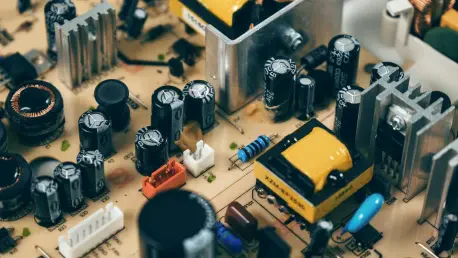The relentless surge of Artificial Intelligence (AI) is transforming every corner of society, from revolutionizing healthcare with precise diagnostics to enabling self-driving cars to navigate complex environments with ease. At the core of this technological leap are semiconductors—specialized chips like GPUs and ASICs that power AI’s most ambitious applications. Yet, a critical challenge looms large on the horizon, threatening to derail this momentum: a profound shortage of skilled talent in the semiconductor industry. This talent crisis is not a minor obstacle but a formidable barrier that could slow the AI supercycle, a period defined by explosive growth and innovation driven by cutting-edge hardware. As the demand for advanced chips escalates, the absence of qualified engineers and technicians risks delaying breakthroughs, inflating costs, and undermining global competitiveness. What began as a niche concern within tech circles has evolved into a pressing global issue, impacting not just corporations but entire nations striving for technological leadership. The implications ripple across industries and economies, raising urgent questions about how to sustain the rapid pace of AI advancement in the face of such a significant workforce gap.
The Backbone of AI Innovation at Risk
The AI supercycle represents a transformative era where rapid advancements in artificial intelligence rely heavily on the performance of specialized semiconductors. These chips serve as the foundation for AI systems, enabling complex computations that drive innovations in fields like autonomous vehicles, climate modeling, and medical research. However, the soaring demand for such hardware has revealed a stark vulnerability in the industry—a severe shortage of skilled workers capable of designing and manufacturing these critical components. Without a robust workforce to support this demand, the momentum of AI innovation faces a real threat of stalling, potentially derailing the very progress that defines this supercycle. The bottleneck is not merely logistical but foundational, as semiconductors are indispensable to unlocking AI’s full potential.
Compounding the issue are the alarming projections about the scale of the talent gap. Industry estimates suggest a global need for over one million additional semiconductor professionals by 2030, with the United States alone facing a deficit of up to 146,000 workers in the near future. This shortfall spans various roles, from engineers specializing in chip design to technicians adept in advanced manufacturing processes. The challenge lies not just in the numbers but in the depth of expertise required, as many of these positions demand highly specialized knowledge that is scarce in the current labor market. Addressing this gap is paramount, as failure to do so could result in delayed product rollouts, increased costs, and a significant slowdown in AI-driven technological progress.
Shifting Skill Demands in a Rapidly Evolving Field
The semiconductor industry is undergoing a profound transformation, with the skills required for success becoming increasingly complex and interdisciplinary. Modern professionals must possess a unique combination of expertise, spanning quantum mechanics, materials science, and AI algorithms, to develop chips that optimize AI performance. This is a marked departure from earlier eras when hardware design operated in isolation from software considerations. Today, engineers are expected to ensure seamless integration between chip architecture and AI models, a hybrid skill set that remains rare and difficult to cultivate. This evolution underscores the growing complexity of the field and the urgent need for talent that can navigate these multifaceted demands.
Educational systems, however, are often ill-equipped to meet these emerging requirements. Many traditional programs fail to provide the hands-on, industry-relevant training necessary to prepare students for the realities of semiconductor work. The disconnect between academic curricula and industry needs creates a pipeline of graduates who lack the practical skills to contribute immediately upon entering the workforce. This gap places additional pressure on companies to invest in extensive on-the-job training, a costly and time-intensive solution. Reforming education to align with current and future industry demands is essential, requiring collaboration between academic institutions and tech firms to develop programs that emphasize real-world application and interdisciplinary learning.
Corporate Competition and Market Dynamics
In the high-stakes world of AI hardware, securing top semiconductor talent has become a critical factor for maintaining competitive advantage. Industry leaders like NVIDIA and Intel depend on skilled engineers to innovate and produce next-generation chips that power the future of AI applications. These companies invest heavily in talent acquisition, recognizing that the ability to design cutting-edge semiconductors directly impacts their market position. Meanwhile, tech giants such as Google and Amazon are focusing on custom silicon solutions to enhance their cloud computing services, further intensifying the race for expertise. Talent, in this context, is not merely a resource but a strategic asset that shapes the trajectory of technological leadership.
Smaller players and startups, by contrast, face significant hurdles in this competitive landscape. Without the financial resources of established corporations, they often struggle to attract and retain the specialized talent needed to innovate at the same pace. This disparity risks creating an uneven playing field, where only a handful of well-funded entities can drive progress in AI hardware. Such concentration of capability could limit diversity in innovation, stifling the emergence of novel ideas and solutions from smaller firms. The talent crisis thus reshapes the entire tech ecosystem, influencing which companies can thrive and which are left behind in the rapidly advancing AI supercycle.
Global Stakes and Governmental Responses
The semiconductor talent shortage extends far beyond corporate interests, carrying profound implications for the global AI landscape. As hardware becomes just as pivotal as software in propelling AI advancements, access to skilled professionals could determine which nations or regions emerge as leaders in this technological race. If talent remains concentrated in a few key areas, it risks exacerbating digital divides and fueling geopolitical tensions over control of critical technologies. The ability to develop and produce advanced semiconductors is increasingly viewed as a matter of national security and economic strength, amplifying the urgency to address this workforce challenge on an international scale.
In response, governments worldwide are launching ambitious initiatives to bolster domestic semiconductor capabilities, though success remains tied to talent availability. Policies like the U.S. CHIPS and Science Act and the European Chips Act commit billions to expand manufacturing infrastructure, aiming to reduce reliance on foreign supply chains. Yet, these investments face a critical limitation: without enough trained professionals to operate new facilities, the impact of such funding could be muted. Building a skilled workforce through targeted training programs and educational partnerships is essential for these national strategies to achieve their goals. The talent crisis, therefore, is a shared global challenge, demanding coordinated efforts to ensure equitable access to the human capital that underpins AI’s future.
Building a Sustainable Future for AI Hardware
Reflecting on the semiconductor talent crisis, it’s clear that the industry faces a defining moment where the shortage of skilled workers poses a significant threat to the AI supercycle’s trajectory. The dependency on specialized chips for AI advancements has become undeniable, yet the workforce needed to sustain this growth falls critically short. Governments, corporations, and academic institutions grapple with the magnitude of the gap, recognizing that delays in talent development translate into missed opportunities for innovation. The competitive struggles of startups and the strategic maneuvers of tech giants highlight how deeply talent shapes the industry’s landscape, while national policies underscore the geopolitical weight of this issue.
Looking ahead, actionable steps must prioritize collaborative solutions to bridge this talent divide. Strategic partnerships between industry and academia should focus on creating agile training programs, such as bootcamps and apprenticeships, tailored to the evolving needs of semiconductor technology. Governments can play a pivotal role by funding STEM initiatives that emphasize interdisciplinary skills and attract diverse talent to the field. Additionally, leveraging AI itself to enhance workforce training offers a promising avenue for scaling education efforts. Sustaining the AI supercycle will require not just technological investment but a renewed commitment to cultivating human capital, ensuring that the foundation of future innovation remains strong and inclusive.









